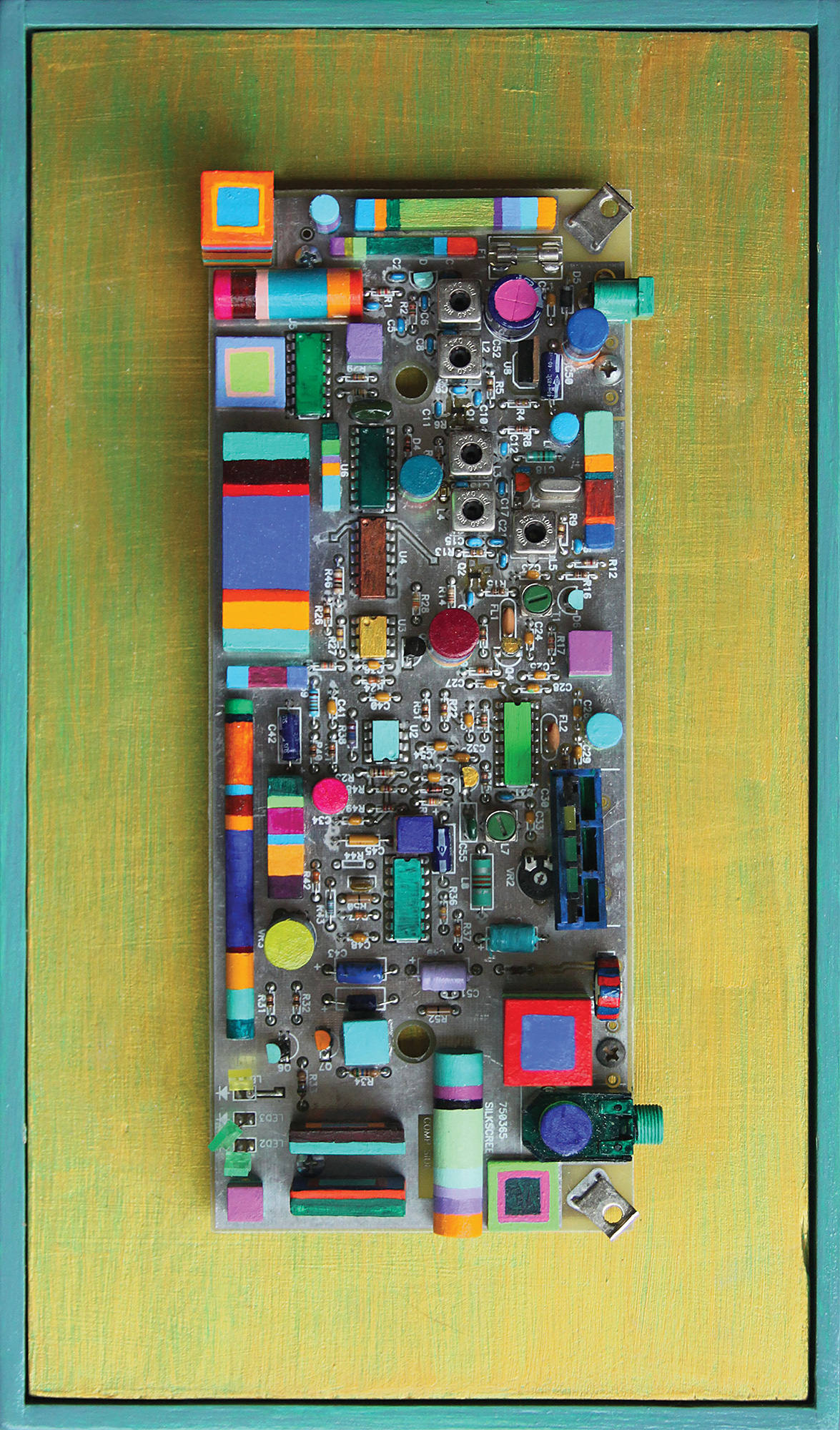The Zen Tour Synergy Core system is an 18 x 24 (eight analog in and 14 analog out), quad DSP-enabled Thunderbolt 3/USB 2.0 recording interface with a wealth of I/O and a spec sheet that rivals or surpasses other comparable desktop boxes in the current market. Available for both Mac and Windows platforms, the Zen Tour Synergy Core has some unique interface elements, such as the dual dedicated re-amp outputs, the 7 x 5.5-centimeter capacitive touchscreen, and DB-25 connectivity for the line outputs – all details that potentially set this little tank apart from desktop interfaces at similar price points.
Speaking of similar desktop boxes, the Zen Tour Synergy Core is a tiny bit larger than the Universal Audio Apollo x4 [Tape Op #136] hardware. Similar to the UA box, the Antelope comes with proprietary DSP-based effects that can be added to the input routing with little to no impact on latency. There are 36 effects bundled with the unit, and Antelope states that it has an "ever-expanding library of Synergy Core DSP/FPGA effects" available, should users wish to expand their own collection. The Antelope hardware has an industrial, almost militaristic case design; all grey-on-black brushed aluminum and hex bolts – it's tough looking!
That same darker palette and utilitarian feel are present in the companion software Control Panel, which acts as a virtual "infinite patchbay" and allows you to route the Synergy Core FX and the varied and sundry I/O.
The three physical buttons combined with the large encoder and touchscreen (all on the top panel) can be used to operate the unit in standalone mode without having to rely on the software. Still, to take full advantage of the hardware, the Control Panel is a must even if just to set up your baseline mixer preset – and here was where I stumbled a bit at first, not being familiar with the unique approach and UX of the Antelope software. However, after a few deeper dives into the manual and a YouTube safari, I was good to go and able to set up zero-latency cue mixes as well as route DSP effects to said mixes. The included effects bundle ranges from Antelope's emulations of classics like the UREI 1176 compressor and Neve and Pultec EQs to a wealth of guitar amp simulators (11 amp sims are included). It's worth noting that the Antelope effects collection, while impressive, is a bit of a walled garden (just like their competitors) in that the effects are proprietary to Antelope's DSP-enabled Synergy-branded interfaces. What I came to realize was that a $195 AFX2DAW plug-in add-on is required to enable tracking/printing effects to your DAW. Though this last detail could be made a little more clear in the marketing materials, it should also be noted that Antelope's included bundle is expansive, and their entire DSP library is price competitive when compared to some of its competition.
In use, the Zen Tour Synergy Core performed flawlessly when recording at rates up to 192 kHz, and adjusting gain stages was a no-computer-screen-needed affair once I became used to the touchscreen navigation. One feature request in future firmware updates would be the ability to resize the touchscreen UX slightly to accommodate for, uh, former bass playing engineers like myself with clumsy meat hooks for fingers.
Speaking of bass people and guitar-folks, may you rejoice in the resplendent I/O! The front of the unit has no less than four Hi-Z inputs and two re-amp outputs! That has to be a top-spec in this class, right? And synth nerds, take note: All of the I/O is DC-coupled, which is a nice touch for those with modular gear or analog synthesizers than can accept control voltages (RTFM, however). The four XLR/TRS combo mic/line inputs each have 65 dB of clean gain available, which can power even sensitive ribbon mics with headroom to spare, and little to no coloration discernable. The A/D spec is impressive, rated at 124 dB of dynamic range at -110 THD+N. D/A dynamic range is 127 dB. Here's what Antelope says about their newly upgraded preamp: "The preamps of the Zen Tour Synergy Core employ a more sophisticated design compared to our discrete range of interfaces. The ultra-linear components contribute to a more realistic detail and micro-dynamics of the recorded sound, and the tonal accuracy is without any irritating coloration. The preamps are on combo jacks, enabling you to record acoustic instruments and vocals or any line-level instruments."
With two headphone outs, a built-in talkback, and a robust control panel, it's easy to see this well-built interface (and accompanying opt-in DSP-optimized effects library) as an option for those musicians or engineers looking for a serious, no-compromise expandable recording solution. The Zen Tour Synergy Core seems well-positioned as a market challenger to similar desktop interfaces like the UA Apollo X4 or the Apogee Symphony Desktop. If I was looking for a tough, future-proof portable solution, the Zen Tour Synergy Core would be at the top of my list.




_disp_horizontal_bw.jpg)